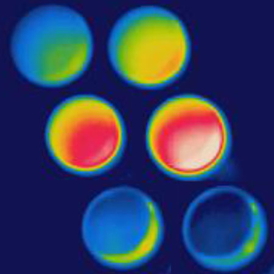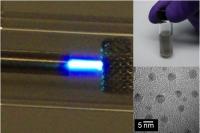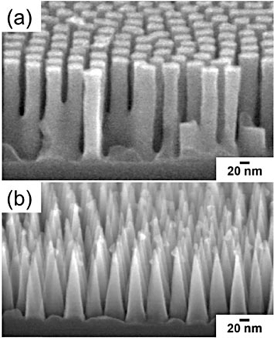Science
Rings, Dark Side of Saturn Glow in New Cassini Image

This colorized mosaic from NASA's Cassini mission shows an infrared view of the Saturn system, backlit by the sun, from July 19, 2013.
- Read more
- 321 reads
A chameleon in the physics lab: Looking cooler when heated, a thin coating tricks infrared cameras

A new coating intrinsically conceals its own temperature to thermal cameras.
- Read more
- 318 reads
Project aims to mass-produce 'nanopetals' for sensors, batteries

These color-enhanced scanning electron microscope images show nanosheets resembling tiny rose petals. The nanosheets are key components of a new type of biosensor that can detect minute concentrations of glucose in saliva, tears and urine. The technology might eventually help to eliminate or reduce the frequency of using pinpricks for diabetes testing.
- Read more
- 390 reads
Asteroid 2013 TV135 - A Reality Check

This diagram shows the orbit of asteroid 2013 TV135 (in blue), which has just a one-in-63,000 chance of impacting Earth. Its risk to Earth will likely be further downgraded as scientists continue their investigations.
- Read more
- 368 reads
Long-Sought Pattern of Ancient Light Detected

This artist's impression shows how photons from the early universe are deflected by the gravitational lensing effect of massive cosmic structures as they travel across the universe.
- Read more
- 356 reads
CWRU makes nanodiamonds in ambient conditions: Opens door for flexible electronics, implants and more

Clockwise) Microplasma dissociates ethanol vapor, carbon particles are collected and dispersed in solution, and electron microscope image reveals nanosized diamond particles.
- Read more
- 386 reads
Nano-Cone Textures Generate Extremely "Robust" Water-Repellent Surfaces: Surfaces with differently shaped nanoscale textures may yield improved materials for applications in transportation, energy, and diagnostics

Side view scanning electron microscope image of a silicon surface textured with (a) cylindrical pillars and (b) nanocones.
- Read more
- 378 reads
A Giant Misalignment in a Multiple Planet System

Graphical sketch of the Kepler-56 system. The line of sight from Earth is illustrated by the dashed line, and dotted lines show the orbits of three detected companions in the system. The solid arrow marks the rotation axis of the host star, and the thin solid line marks the host star equator.
- Read more
- 375 reads
Modification of Surface of Titanium Dioxide Nanoparticles with Biocompatible Materials

- Read more
- 492 reads
Human Rights
Fostering a More Humane World: The 28th Eurasian Economic Summi

Conscience, Hope, and Action: Keys to Global Peace and Sustainability

Ringing FOWPAL’s Peace Bell for the World:Nobel Peace Prize Laureates’ Visions and Actions

Protecting the World’s Cultural Diversity for a Sustainable Future

Puppet Show I International Friendship Day 2020


